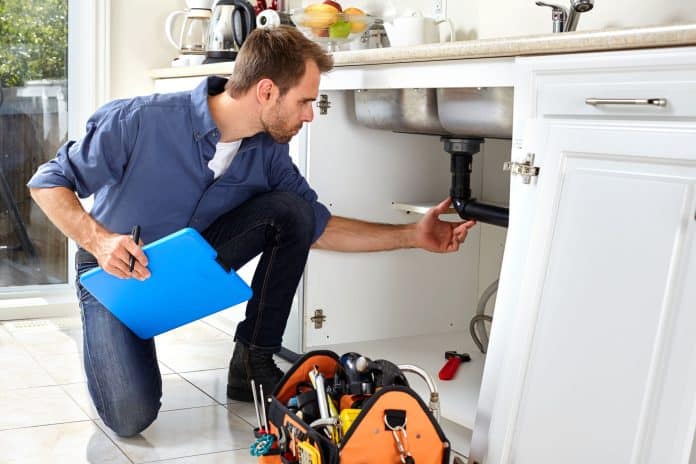
Owning a home is pricey. Homeowners often don’t realize just how much home repairs and home improvements can be. Luckily, there are assistance options available that can be useful. The government provides these assistance opportunities that can help homeowners deal with the costs of home repair and/or home improvements.
Home Repairs vs Home Improvements
When you own a home, the difference between home repairs and home improvements can be confusing. Especially since people tend to use the terms interchangeably when talking about homes. However, there is a difference that is important to know!
Home repairs typically include work that can maintain the function, performance, or look of the home. On the other hand, home improvements involve a change to the property that can improve the function, look, feel, etc., of the home. Basically it means maintaining versus changing. Either way, both of these home projects can be costly to homeowners. That is why there are government assistance options that can help!
Common Home Repairs
Now that you understand the difference between home repairs and home improvement, you should know examples of each. Popular home repairs include:
- Foundation Repairs
- Electrical Repairs
- Roof Repair
- Water Damage Repair
- Plumbing Repairs
- Mold Removal
Popular Home Improvements
There are also popular home improvements that homeowners typically choose to do which include:
- Bathroom Remodels
- Extra Room Additions
- Yard Landscaping
- New Floors
- Roof Replacement
- Window Replacement
Government Assistance for Home Repairs
Countless Americans don’t realize just how many assistance options are available for homeowners who need help with home repairs. Popular government assistance includes:
- HUD Title 1 Property Improvement Loan Program
- 203(k) Rehabilitation Mortgage Insurance Program
- Disabled Veterans Housing Assistance
- Home Improvements and Structural Alterations Grant
- Housing Improvement Program
HUD Title 1 Property Improvement Loan Program
The United States Department of Housing and Urban Development (HUD) and private lenders work together to offer this loan program. HUD insures private lenders against any loss they may face with home improvement loans. While HUD isn’t the direct lender, they provide support for the private lenders. This loan program can help cover both small and large home improvements! These loans can be used towards financing repairs, improvements, and changes for homes that have been occupied at least 90 days. This also includes manufactured homes and other eligible properties.
Homeowners can apply at any eligible private lender like a bank, mortgage company, credit union, etc. They must have approval to give Title I loans. Not just any lender can provide them. Interest rates for these loans are fixed that usually depend on the common market rate in the area. However, it will vary depending on the lender and applicant. Other terms for these loans include that any loan over $7,500 must be secured by either a deed of trust on the property or a mortgage. There are also no prepayment penalties!
203(k) Rehabilitation Mortgage Insurance Program
The Section 203(k) Rehabilitation Mortgage Insurance Program insures mortgages covering the purchase of a home or the refinance of a home. The home must be at least a year old. This program also covers the cost of rehabilitating the home. A part of the loan will be used to pay the seller if it’s to purchase a home. If it’s a refinance, it would be used to pay off the existing mortgage.
The rehabilitation must cost at least $5,000. Once done, the total value of the property must still be within the FHA mortgage limit for the area. Property value is determined by the value of the property before rehabilitation plus the cost of rehabilitation or at 110% of the appraised value of the property after rehabilitation. It just depends on whichever is less. This program can cover home improvements like:
- Structural changes
- Reconstruction
- Home modernization
- Home function improvements
- Removing health and safety hazards
- Improving the look of the home
- Improving plumbing
- Replacing plumbing, roofing, gutters, and floors
- Improving accessibility for those with disabilities
- Making energy improvements
Disabled Veterans Housing Assistance
Eligible veterans that have service-connected or age-related disabilities may be able to receive housing assistance grants. There is either the Specially Adapted Housing (SAH) grant or the Special Housing Adaptation (SHA) grant. These grants can be used to build an adapted home, install ramps, widen doors, and make other changes that help people live life on their own. This assistance option is offered by the United States Department of Veterans Affairs (VA). If you have any questions about this program you should check with your local VA office.
Home Improvements and Structural Alterations (HISA) Grant
Those with disabilities may be able to get home improvement assistance that can help homeowners with funds they need to make medically necessary home improvements. The VA offers this program as well and it can help cover improvements that make the accessibility of the home better for those with disabilities. It doesn’t cover improvements like:
- Walkways to exterior buildings
- Spas
- Hot tubs
- Jacuzzis
- Exterior decking
Housing Improvement Program
Eligible Low-Income Native Americans can receive grant support from this program. This program provides grants for home repair, renovation, and new housing. It is provided by the Bureau of Indian Affairs (BIA) and can help those most in need.
Alternative Housing Assistance Options
Besides these home improvement programs there are other programs that can help people deal with housing costs like:
- Low Income Home Energy Assistance Program (LIHEAP)
- Low Income Household Water Assistance Program (LIHWAP)
- Weatherization Assistance Program (WAP)
Low Income Home Energy Assistance Program (LIHEAP)
Utility bills are an expensive cost that homeowners have to deal with. Luckily LIHEAP can help with that. LIHEAP provides eligible individuals benefits to help with home energy bills, energy crises, weatherization, and energy-related minor home repairs.
Low Income Household Water Assistance Program (LIHWAP)
A similar program to LIHEAP is LIHWAP and it can help eligible individuals receive funds to deal with water and wastewater bills. It is a program for those who have already received LIHEAP assistance. However, it is important to check eligibility criteria for your locality.
Weatherization Assistance Program (WAP)
The United States Department of Energy (DOE) provides the WAP program that can reduce energy costs for eligible households. They can do this through improving the energy efficiency of qualifying homes while protecting the health and safety of the household. Through WAP households save an average of $283 or more every single year!
What if You Don’t Qualify for Housing Assistance?
Unfortunately not everyone may be eligible to receive housing assistance even if they are dealing with financial hardship. If you find that you cannot qualify for housing assistance there are still things you can do! People can:
- Make a budget
- Get Another Source of Income
- Do a DIY Projects
Make a Budget
Even if you are not eligible to receive housing assistance, you can make the most with what you have. Making a budget can help you understand your money and show you how you can save. Once you have enough money in savings and you can pay for the home repair or home improvement out of pocket!
Get Another Source of Income
If you don’t make enough to afford a home project then you may benefit from getting another source of income. While you don’t need to commit to another full-time gig, you may benefit from something part-time that works around your current schedule. Even an extra $100 a week can add up over time.
Do a DIY Project
Not every home repair or home improvement will be a DIY project. Some projects require a professional and can be dangerous to handle on your own. However, some can be very simple and with some guidance you may be able to do it on your own at a more affordable cost.
Overall
Home repairs and home improvements can be a costly expense for homeowners to deal with. Luckily, that doesn’t need to be the case! There are plenty of home repair and home improvement government assistance options that can help those in need deal with the costs. Different agencies offer different programs and eligibility requirements will vary depending on the program and source. However, there may be more support for your situation than you realize. If you have any other questions about how you can better handle the costs of home repairs or home improvements you may benefit from speaking to your local financial institution for advice!


















